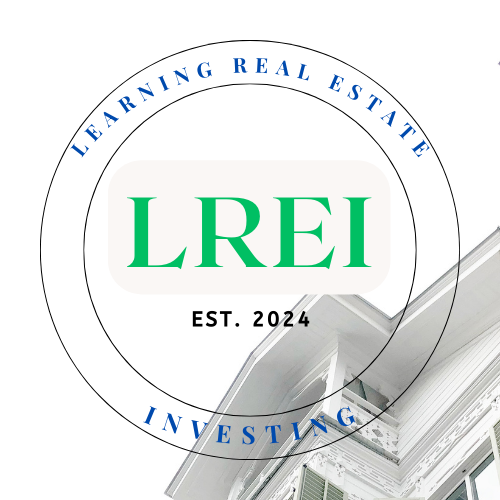Retiring early is a dream for many, but achieving financial freedom before the traditional retirement age requires a solid plan. Real estate investing is one of the most powerful wealth-building strategies that can help you generate passive income, build equity, and secure long-term financial stability. In this guide, we will explore how you can retire early through real estate, step by step.
1. Why Choose Real Estate for Early Retirement?
Real estate is a proven path to wealth and financial freedom. Unlike traditional investments like stocks and bonds, real estate offers multiple income streams, appreciation potential, and tax advantages. Here’s why real estate is a great vehicle for early retirement:
- Passive Income: Rental properties generate consistent cash flow.
- Appreciation: Property values generally increase over time.
- Leverage: You can use other people’s money (mortgages) to grow your portfolio.
- Tax Benefits: Deductions on mortgage interest, depreciation, and property expenses.
- Hedge Against Inflation: Rental income increases over time, keeping pace with inflation.
2. Setting Your Early Retirement Goal
Before diving into real estate investing, it’s crucial to define your early retirement goal. Ask yourself the following questions:
- How much monthly income do you need to retire comfortably?
- What type of real estate investments align with your lifestyle and goals?
- How many properties or cash flow sources do you need to reach financial independence?
A common rule of thumb is the 4% rule, which states that you can safely withdraw 4% of your portfolio annually. However, real estate investors often aim for cash flow-based retirement, where rental income covers all expenses and living costs.
3. Building Your Real Estate Portfolio
Step 1: Save for Your First Investment
You don’t need millions to start investing in real estate. Many successful investors start with a single rental property. Here’s how to get started:
- Reduce Expenses: Cut unnecessary spending to save for a down payment.
- Improve Credit Score: A higher credit score will get you better loan terms.
- Explore Financing Options: Consider traditional mortgages, FHA loans, VA loans, or private lenders.
Step 2: Choose the Right Investment Strategy
There are several real estate investment strategies to consider:
- Buy and Hold: Purchase properties and rent them out for long-term passive income.
- House Hacking: Live in one unit of a multi-family property while renting out the others.
- Short-Term Rentals: Airbnb and vacation rentals can generate high cash flow in desirable locations.
- BRRRR Method (Buy, Rehab, Rent, Refinance, Repeat): A strategy to recycle your capital and scale your portfolio faster.
- Wholesaling and Flipping: Buying undervalued properties and selling them for profit.
Step 3: Generate Positive Cash Flow
Your rental properties should produce positive cash flow, meaning rental income exceeds expenses. Calculate key metrics like:
- Cash-on-Cash Return (COC): Measures your return based on the cash invested.
- Cap Rate: The annual return on your investment before financing costs.
- Debt Service Coverage Ratio (DSCR): Ensures your rental income covers mortgage payments.
The goal is to acquire enough cash-flowing properties to replace your current income.
4. Scaling Your Real Estate Business
Leverage Equity to Buy More Properties
As your properties appreciate, you can use a home equity line of credit (HELOC) or cash-out refinance to reinvest in new properties. This allows you to scale quickly without needing large amounts of upfront cash.
Diversify Your Portfolio
To protect against market fluctuations, invest in different types of real estate, such as:
- Residential Rentals (Single-family & Multi-family)
- Commercial Real Estate
- Vacation Rentals
- Real Estate Investment Trusts (REITs)
Automate and Outsource
As your portfolio grows, managing properties can become time-consuming. Outsourcing tasks to property managers and automating rent collection, maintenance requests, and accounting will free up your time and make real estate truly passive.
5. Reducing Expenses and Maximizing Profits
Take Advantage of Tax Benefits
Real estate offers various tax deductions, including:
- Mortgage interest deductions
- Depreciation on rental properties
- Property management fees
- Home office deductions (if applicable)
Work with a CPA who specializes in real estate to minimize taxes and maximize profits.
Lower Your Living Expenses
Consider moving to a low-cost-of-living area or living in one of your rental properties to reduce expenses while you build wealth.
6. Achieving Financial Independence
Create Multiple Streams of Real Estate Income
To ensure financial stability, diversify your income through:
- Rental properties
- Short-term vacation rentals
- Owner financing deals
- Real estate syndications
Use the FIRE Method
The Financial Independence, Retire Early (FIRE) movement focuses on accumulating wealth aggressively and living off investments. Many FIRE advocates use real estate as a primary strategy to achieve early retirement by building a portfolio that generates consistent cash flow.
7. Planning for Retirement and Beyond
Build a Safety Net
While real estate is a great wealth-building tool, it’s essential to have emergency savings, insurance, and a diversified investment strategy to protect your financial future.
Leave a Legacy
Real estate allows you to pass down generational wealth to your children or loved ones through inheritance planning, trusts, and estate strategies.
Conclusion
Retiring early through real estate is achievable with the right strategy, discipline, and commitment. By acquiring cash-flowing rental properties, leveraging equity, maximizing tax benefits, and scaling smartly, you can create a sustainable passive income stream that supports your early retirement goals.
The key is to start now—whether it’s buying your first rental property, house hacking, or investing in REITs, every step you take brings you closer to financial freedom. Take action today and make your dream of early retirement through real estate a reality!



Leave a Reply